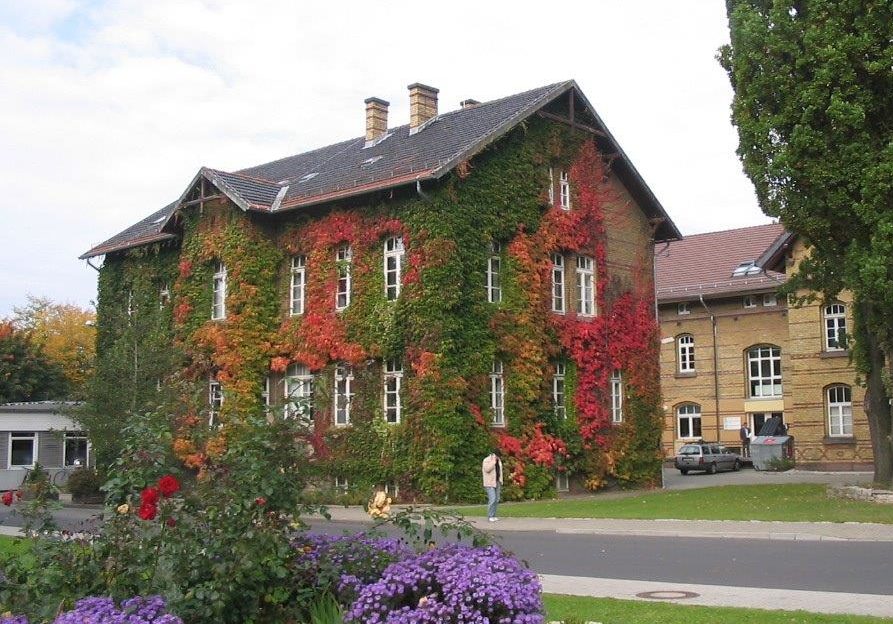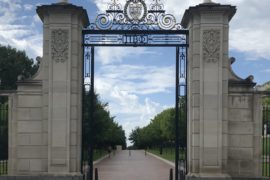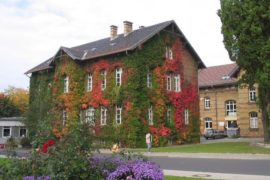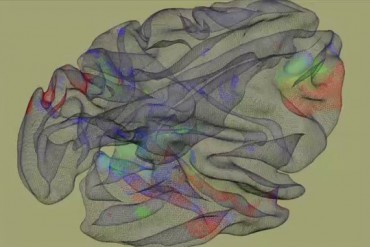“Today, life at university is better than in the past!” Doris Köplin gives me a friendly look over the table in front of Café Campus. We have been sitting here for about three minutes and let the autumn sun shine in our faces. Although we have only been talking for such a short time, the conversation already surprises me. Does she miss anything from the past, I ask her. She thinks about it for a moment and then denies it firmly. “It has a lot to do with attitudes towards women. It used to be much more conservative than it is today.” She cannot name a specific situation. “I can’t really put it into words. It was all so subtle and natural. The woman played a subordinate role. Today it’s taken for granted that women have equal rights.”
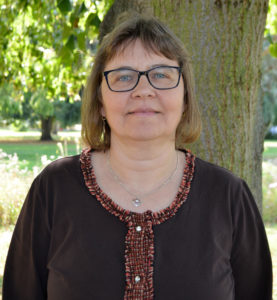
Doris Köplin knows what she’s talking about. She has been working in the Facility Management of the university since 1986. She has worked with six presidents and has experienced the changes of the last 30 years first hand. Compared to my six years of university life, I can’t keep up. But that’s why she’s exactly the right person for me to talk to about the history of the university. And by that I don’t mean the official history, which can be read in chronicles and on the website. Today is supposed to be about personal matters. On the brown table between my Mrs Köplin and me lies my notebook with my questions. Next to it my pen (and my mobile phone for audio recording – laziness wins). I am ready. Let the history lesson begin.
Doris Köplin has a lot to say. A large part of it (if I am honest, everything) is new to me. For example this: The university used to own apartment buildings. Not a guesthouse, but a whole area near the Geosciences building. “All of them were mainly workers who were employed in the hospital or in other departments,” my current history teacher explains to me. It was her job to go there when, for example, something was broken. After all, claims processing is just as much a part of her facility management tasks as the billing of operating costs and rental contracts. Köplin says she loved to be in the university’s apartment buildings. The reason: “It was a melting pot of nations. There was a large group of Greeks, for example. They were warm, friendly and incredibly hospitable people.” However, the area has now been sold, the international workers have moved out. So maybe it was better before? Doris Köplin does not give the impression.
Today it is simply less formal, less rigid. “I found letters in which the headmaster was addressed with Magnificence. Today everything is much more relaxed. People no longer pay that much attention to it. That’s nice.” The university today is not only more open to the inside, but also to the outside. In the past, the city and the university were like two different worlds facing each other – unlike today. Doris Köplin has experienced this change first hand. She connects one person in particular with it: “I think the former president Mr. von Figura was one of the first to be publicly present.” Unforgotten, of course, is the fact that he also took part in DIES – even if not very successful. “He broke his leg in a compound fracture,” Doris Köplin tells me and has to smile a little. “He was playing soccer. That would have been unthinkable in the past.”
But one thing would be unthinkable today: In order to get car from the parking lot, you needed to push other cars away (yes, you read correctly – but that’s exactly how I looked). I need to ask for more details. “There used to be a wasteland where the SUB is now,” Doris Köplin draws the picture in my head. “On the meadow were such small wooden boundaries. And that’s where you parked your car, didn’t put on the handbrake and let the gear out.” When you wanted to go home again at the end of the day, you simply pushed your way through. There were no signs to explain this. “It was common knowledge.” Mrs. Köplin didn’t like parking her car there. “You never knew in what condition you’ll eventually find your car.” And as an employee, she had had the opportunity to park somewhere else. The students happily pushed their cars around. The 80s! Good times!
But if the SUB didn’t exist yet, where were the books? The simple answer: outsourced. Doris Köplin also has a story to tell about this: “The university had rented storage space in Lange Geismar Straße. The whole building was crammed with books on shelves. Whenever necessary, books had to be transported back and forth, because normal students couldn’t get in. It was a magazine building.” She thinks that it’s more pleasant today. Above all, the fact that lending process is now also done via the Internet is a great improvement. (I can only agree with her.)
Oh yes, that’s what she experienced as well: the introduction of computers in the office. A big change for Doris Köplin, as she explains: “When I started, there were still typewriters. And with luck, a photocopier, too; such a precursor.” That sounds tedious. It was! “Whenever I had to write a letter that concerned a lot of people, I made a form and then I used the typewriter to put in all the appropriate names.” When Doris Köplin returned to her office on 1 October 1999 after six years of baby break, the computers were suddenly there. But the administrative employee coped very well with this innovation, as she explains: “When I returned after maternity leave, my boss at the time recommended that I take computer courses. So I did, and then I had a small advantage over the others.”
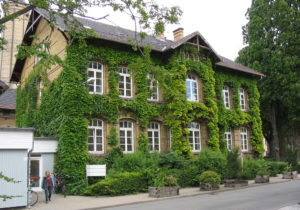
Another change at her workplace was more difficult for her: “I suffered from the fact that the vine was removed from the facility management building in Käthe-Hamburger-Weg,” Doris Köplin tells me and immediately gives the reason for this: “Now it doesn’t look so nice anymore, somehow bald and brown. Before there was life in it – bees and everything.” So after almost half an hour of talking we found something that has changed for the worse; but that is not decisive for her basic mood. Doris Köplin herself summarizes her history lesson in one sentence: “A lot has changed – but for the better!”
In the Alumni Stories series we collect stories about the university from former students, teachers and long-time employees. You have exciting stories to tell yourself? Then get in touch at blug@uni-goettingen.de!

